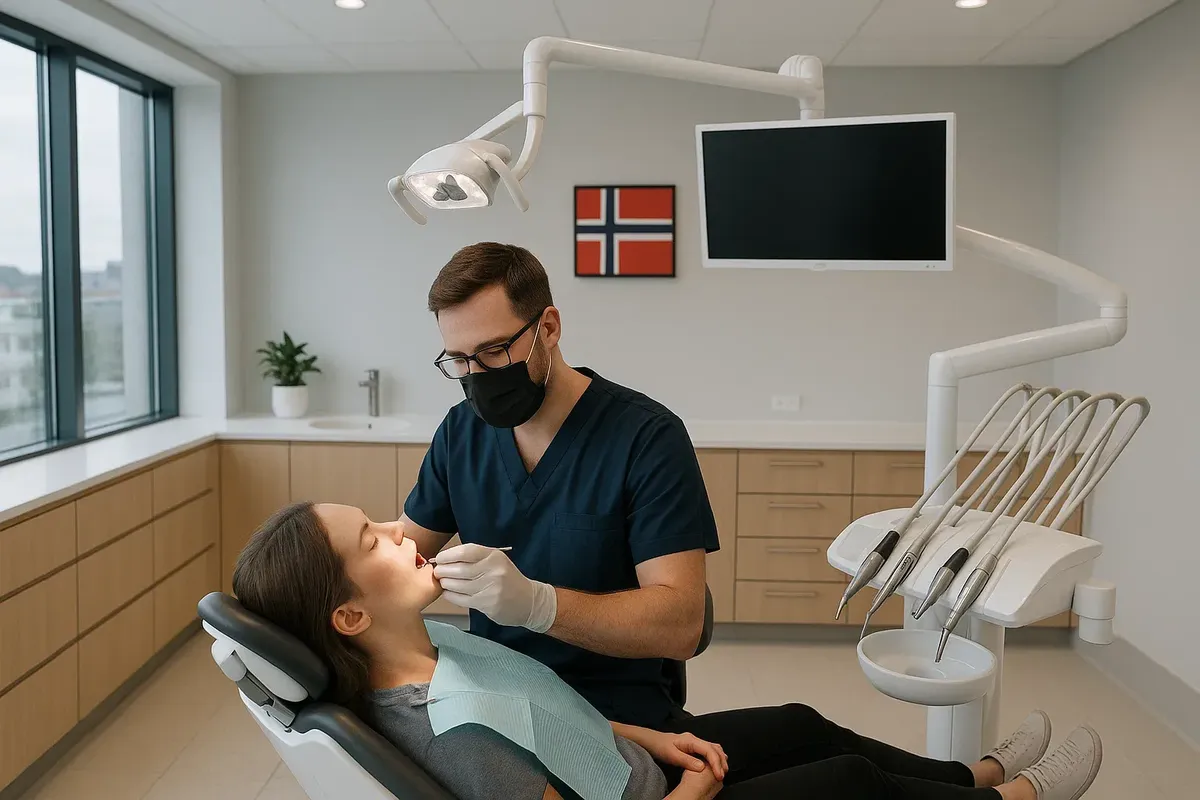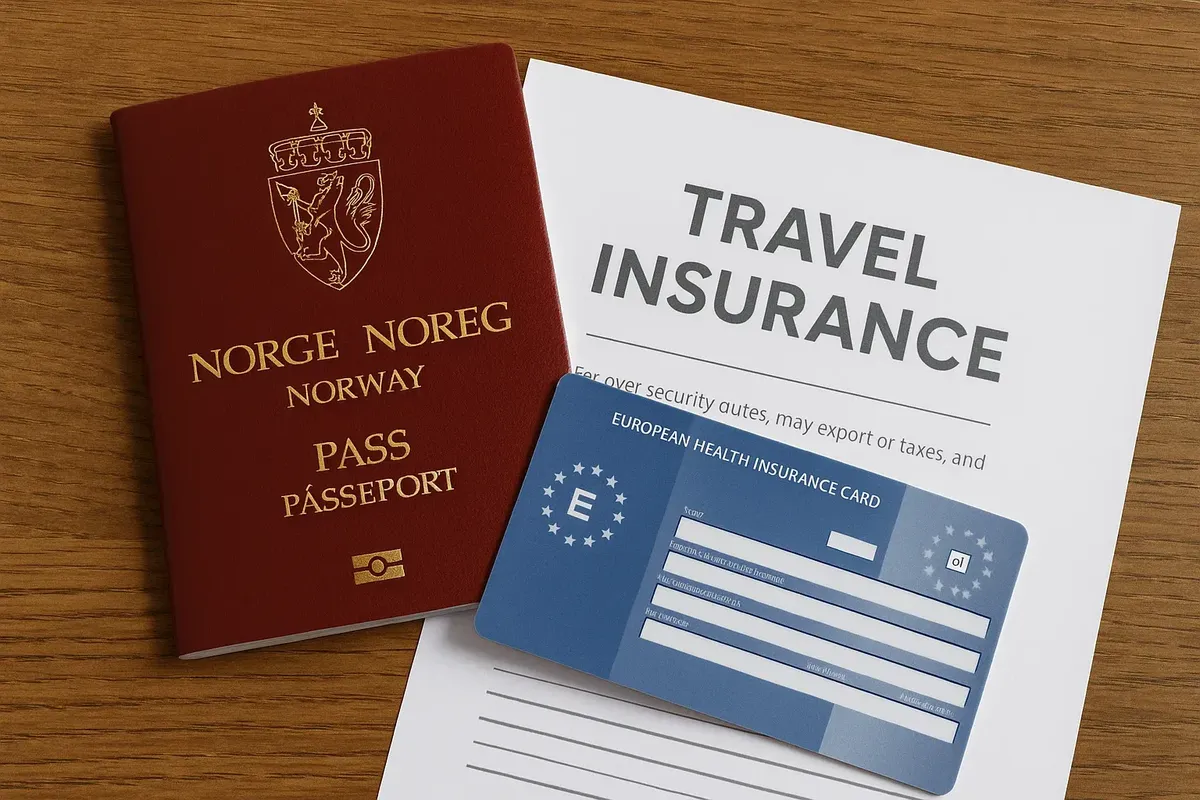⚕️ Getting sick doesn't have to break the bank: healthcare and insurance in Norway (updated for 2025)
Norway is one of the top five countries for healthcare, according to the EuroHealth index. But it can seem like a maze to people who are new to the country. You can see a doctor when you make an appointment, you can get some things for free, you can get free hospital care, you can get free dentistry and you can get extra insurance that your employer gives you as part of the social benefits package. To avoid being put off by the numbers, let's break it down step by step: what costs money, where the line between 'free' and 'paid' is, when you need private insurance, and how much you'll pay for a cold, a filling, or a broken ski. Below are the 10 most important questions and their answers. They include the current prices, limits and life hacks for 2025.
👨⚕️ How much does a visit to a family doctor (fastlege) cost, and what does the fee cover?
When you sign up with a fastlege, you pay 316 kr for any appointment that is less than 20 minutes long. This includes advice, prescriptions and referrals to specialists. You have to pay an extra 179 kr for a blood test, and an ECG costs 110 kr. Children under 16 and pregnant women do not have to pay. The amount goes towards your annual 'personal ceiling'.Egenandelstak 3,240 kr: when your expenses reach this amount, the system automatically issues a Frikort — this means that all further visits to GPs and specialists until 31 December are free of charge. Advice: Make sure you keep hold of your receipts in Helsenorge, because sometimes payments are delayed in the system and you might end up paying too much.

🚑 What will it cost to get an ambulance, go to the emergency room (Legevakt) and be admitted to hospital?
If you dial 113 in an emergency, you will not have to pay for the call. The same goes for the journey to the hospital. If you go to Legevakt without a referral, it costs 375 kr during the day and 558 kr at night or on weekends. You have to pay separately for any examinations. Folketrygden covers the costs of hospitalisation, surgery, room and board for residents. You can ask for a private room, but there is an extra charge of 1,240 kr for each day. If you're a foreign tourist without an EHIC, you will have to pay for treatment in a hospital. It will cost around 6,400 kr for a stay of one day, so make sure you have travel insurance!
🦷 Dentistry: why is it so expensive and how can you save money?
Adults pay the full price, which is 710 kr for an examination and cleaning, 1,190 kr for a filling on one surface, and 6,500 kr for a crown. Children under 19 and young people aged 19–24 receive a 50% subsidy; some groups (like people with diabetes or periodontitis) receive some help from HELFO. You can save money by:
Get 40% off at University clinics (OsloMet, UiT).
Storebrand Tann insurance costs 149 kr a month. It covers two check-ups and fillings up to 2,000 kr a year.
Every March, you can get 25% off at lots of dental associations as part of the TannlegeUka promotion.

🛡️ Is private health insurance just marketing or is it actually useful?
The Helseforsikring policy (Gjensidige, If Vertikal) costs from 3,156 kr/year (no excess) and gives you access to a specialist within 10 working days, MRI within 7 days and surgery in a private clinic. For an IT specialist earning 900,000 kr, a day of sick leave costs the company 5,000 kr. So employers include the policy in their benefits package. You should buy it yourself if you like things to be quick and you don't take more than the allowed amount (you rarely get sick).
🌍 EHIC/Norge: why do you need it and what does it cover abroad?
The European EHIC card (Europeisk Helsetrygdkort) is free and can be ordered from Helsenorge — it arrives within seven days. In the EEA, it works the same way for visitors as for locals: if you break your arm in Austria, you only pay the local Eigenanteil. Snowboard resorts that are not open to the public or places where people can live after they leave hospital are not included. You will need to buy travel insurance (approximately 8 kr/day) for these. Without an EHIC, the ambulance in France costs €785, which you have to pay up front. You can get some of this money back from HELFO, but it's a complicated process.

💊 How much do medicines cost, and what is the most you can spend?
Prescription drugs have a fixed 'blå-resept' price: the patient pays 39–520 kr for a three-month course, depending on the category. These payments go to the same 'Egenandelstak 3 240 kr'. OTC (paracetamol, antihistamines) are also sold in supermarkets, but they cost more there: 20 tablets of Paracet 500 mg cost 39 kr at KIWI compared to 29 kr at Apotek1. Here's a secret: pharmacies have special offers every month. Download the Apotek1 app to get 15% off your first online order.
🤰 How much does the family pay for pregnancy and childbirth?
All visits to the doctor while you are pregnant, check-ups, childbirth and care after the birth are free. Private 3D ultrasound available on request — 1,200 kr. A stay at Barselhotell (a family postnatal hotel) costs 450 kr/night with meals for the father, but this is often covered by the employer's insurance. You can rent breast pumps for free with a prescription.
🧠 Physiotherapy, psychotherapy, ophthalmology: paid or free?
From 2023, physiotherapy without a GP referral will cost 352 kr for 45 minutes and will be covered by Frikort-baff. Free for children under 16. Psychologist — 1,035 kr for 50 minutes privately, but 'Fast track' through your GP at the DPS clinic — 345 kr (included in the voucher). Glasses? An eye examination for adults costs 725 kr, and you have to pay for your own lenses. For children and those diagnosed with astigmatism > 1.5 D, the state pays 900 kr/year.
✈️ I am a tourist. What kind of insurance should I get, and how much does it cost?
Travel Insurance Europe's 8-day trip is from €65 (Lloyd's). It covers €5,000 of medical costs and has no excess. Sports supplement for skiing/kayaking – €18 extra. Please note that in Norway, if you cancel a trip, you will have to pay 70–80% of the tour price. Without insurance, it costs 375 kr to get into Legevakt, but if you break a bone while skiing it can cost 26,000 kr because of the complicated treatment and an overnight stay.
💡 Save money legally by using these five buttons to avoid overpaying.
1) Keep your EHIC in your pocket.
2) Download the Helsenorge app — for all egenandel statistics, e-prescriptions and electronic queues.
3) Find last-minute appointments at private clinics through Timebestilling — get 30% off for 'fill-gap'.
4) Buy paracetamol at a pharmacy where it is on sale, not at Spar.
5) Get insurance with a 1,000 kr deductible: Frikort will cover minor visits, but you'll need the policy for 'big' expenses.
The Norwegian 'state + reasonable personal contribution' system makes healthcare affordable and predictable: The salary is 316 kroner per hour, with a yearly limit of 3,240 kroner. You get free hospital treatment, benefits for children and pregnant women. Add EHIC, Frikort and reasonable private insurance, and even a serious injury will not turn into a financial disaster. The most important thing is to know the rates, keep electronic receipts and take out insurance outside the EEA. Then you'll be fit and well, and you'll have plenty of money to keep exploring Norway's fjords, mountains and saunas.




2 comments
Log in to leave a comment
Er det noen skjulte utgifter turister bør være klar over når det gjelder helse og forsikring? 💊